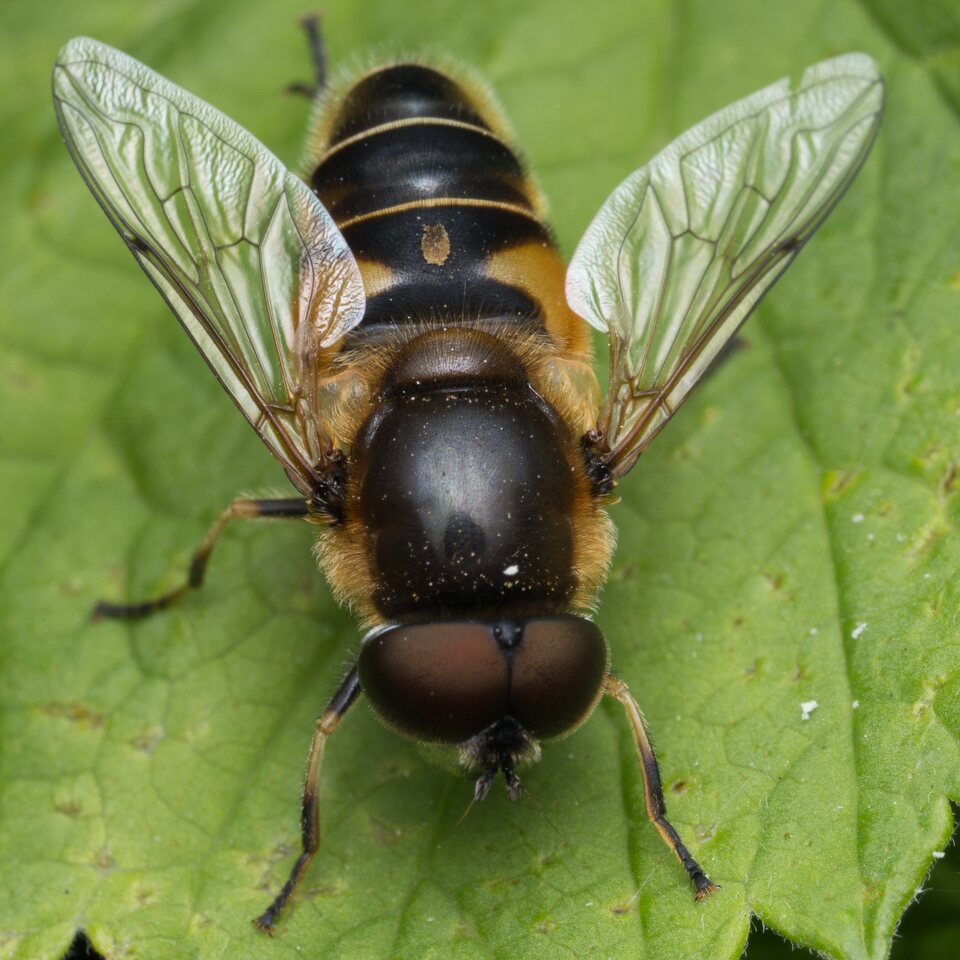
Eristalis tenax · srutinė žiedmusė
- common drone fly
- Mistbiene, Schlammbiene, Scheinbienen-Keilfleckschwebfliege, Drohnenfliege
- srutinė žiedmusė
- gnojka wytrwała
https://en.wikipedia.org/wiki/Eristalis_tenax It is the most widely distributed syrphid species in the world and is known from all regions except the Antarctic. It has been introduced into North America and is widely established. It can be found in gardens and fields in Europe and Australia. It has also been found in the Himalayas.
The larva of E. tenax is a rat-tailed maggot, which is saprophagous. It lives in drainage ditches, pools around manure piles, sewage, and similar places where water is polluted with organic matter. The larvae likely feed on the abundant bacteria living in these places.
When fully grown, the larvae creep out into drier habitats, and seek a suitable place to pupate. In doing so, they sometimes enter buildings, especially barns and basements of farmhouses. The pupae are typically 10–12 mm long, grey-brown, oval, and retain the long tail; they look like a tiny mouse.
‥- tags
- mimicry
- model
- Canon EOS 6D
- f
- 16
- EV±
- 0.0 EV
- speed
- 1/160 s
- flash
- yes, mode: compulsory
- ISO
- 100
- focal
- 65 mm
- mode
- manual
0 comments
Add a comment
Comments